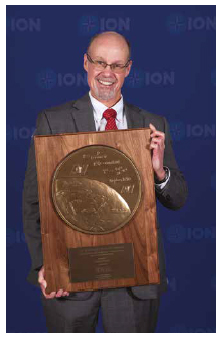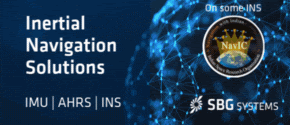| GNSS News | |
GNSS
Sixth GLONASS-K satellite lifts off
The liftoff of the Soyuz 2-1b/Fregat rocket with the sixth GLONASS-K satellite took place as scheduled on Sept. 13, 2025, from Site 43 in Plesetsk. Around five hours after the launch, the Ministry of Defense reported that both payloads had been delivered into their orbits on time. Roskosmos also reported that the spacecraft were designated Kosmos-2595 and Kosmos-2596. https://russianspaceweb.com
ESA’s Celeste LEO-PNT demonstrator mission set to launch in December
The European Space Agency (ESA) has confirmed plans to launch the f irst two satellites in its low-Earth orbit (LEO) positioning navigation and timing (PNT) constellation in the second half of December 2025. The launch will use a Rocket Lab Electron Vehicle, marking Europe’s first venture into LEO-based satellite navigation.
The LEO-PNT in-orbit demonstrator mission, called Celeste, aims to test satellite navigation capabilities in LEO and evaluate its integration with existing medium-Earth orbit (MEO) systems. Celeste features a constellation of ten satellites that will fly close to Earth to test innovative signals across various frequency bands. The first two Celeste satellites, built in parallel by GMV and Thales Alenia Space, are set to launch in the coming months. www.esa.int
New satellite strengthens EGNOS
The European Commission announces a major milestone for EGNOS, Europe’s satellite-based augmentation system. On 25 August 2025, the GEO-3 satellite Eutelsat 5 West B officially transitioned from test to operational status, broadcasting the EGNOS Signal-in Space. This upgrade forms part of the EGNOS System Release 2.4.3, which deployment started in August 2025. The system release ensures that EGNOS continues to provide reliable and uninterrupted services while paving the way towards its future evolution, including the next-generation EGNOS V3. defence-industry-space.ec.europa.eu
Next-gen automotive navigation application
TomTom has launched its Automotive Navigation Application, a navigation solution designed for automakers that combines TomTom Orbis Maps with an enhanced user interface layer built on the company’s Navigation SDK. The company said the integrated solution allows car manufacturers to deploy navigation systems more quickly while reducing development costs and timelines. www.tomtom.com
Logan Scott receives Kepler award
Institute of Navigation’s (ION) Satellite Division awarded Logan Scott its Johannes Kepler Award on September 12, 2025, during the ION GNSS+ 2025 conference in Baltimore, Maryland, USA for sustained contributions to satellite navigation signal design, recognition and mitigation of interference and spoofing threats to GPS, and advocacy for civil GNSS assurance. Logan Scott’s seminal contributions to satellite navigation over his 45+ year career include digital receiver design; early recognition of threats to GPS from interference and spoofing; invention of location-based encryption, “J911” crowd-sourced geolocation of interference sources; and use of cryptographic signal authentication for civil radionavigation signals.

Scott was a key technical leader in pioneering receiver designs at Texas Instruments, including signal acquisition and tracking, adaptive arrays, jamming, and fade resistance. In 1985, Logan and his team developed the world’s first all-digital GPS receiver, paving the way towards the low-cost, compact, lightweight, and energy efficient receivers now numbering in the billions.
Scott was the first to describe methods for civil signal authentication. He invented a new and fundamental delayed-key asymmetric navigation security paradigm now embodied in the GPS Chimera signal, next generation WAAS, and Galileo systems; and he participated in the creation of the Chimera authentication signal.
Scott discovered and described how an adaptive array can bias phase and pseudorange measurements to adversely affect high precision receivers; particularly how such biases could cause Real Time Kinematic (RTK) ambiguity resolution to fail. This work became essential to the success of the Joint Precision Approach and Landing System (JPALS) program.
Since 2015, Scott has been a core member of the NTS-3 Advanced Signals Team, originating multiple signal design concepts, at least nine of which will be tested on-orbit. His signal designs focus on civil signal assurance, optimization of the navigation data message by leveraging concepts from the communications industry, and advanced waveforms to enhance military receiver performance.
As a member of the U.S. National PNT Advisory Board, Scott promoted the need and methods for resilient and robust PNT, and required spectrum protection. In 2010-2011 he developed and quantified the performance of crowdsourced interference detection and geolocation using cell phones. ion.org
Dr. Jason Anderson receives Parkinson award
Institute of Navigation awarded Dr. Jason Anderson its Bradford W. Parkinson Award on September 12, 2025, during the ION GNSS+ 2025 conference in Baltimore, Maryland, for his thesis: Designing Cryptography Systems for GNSS Data and Ranging Authentication.
Jason Anderson received his PhD from Stanford University where his research in the Stanford GPS Lab pertained to constructing efficient cryptosystems for GNSS. Before Stanford, Dr. Anderson received a Mechanical and Nuclear Engineering degree from UC Berkeley. Dr. Anderson has worked at SpaceX, General Atomics, and is currently working at Xona Space Systems as a Senior Security Engineer.

This award, which honors Dr. Bradford W. Parkinson’s leadership in establishing both the U.S. Global Positioning System and the Satellite Division of the ION, recognizes an outstanding graduate student in the field of Position, Navigation, Timing (PNT) and/or Applications. ion.org












 (No Ratings Yet)
(No Ratings Yet)





Leave your response!